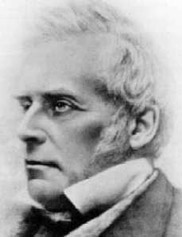Related Research Articles

Dispensationalism is a theological framework of interpreting the Bible that was systematized and promoted by John Nelson Darby and the Plymouth Brethren. Dispensationalism maintains that history is divided into multiple ages or "dispensations" in which God acts with humanity in different ways. Dispensationalists maintain beliefs in premillennialism, a future restoration of national Israel, and a rapture of the Church that will happen before the second coming, generally seen as happening before a period of tribulation. The term "dispensationalism" itself was coined by a critic of the system, Philip Mauro, in 1926.
The New Covenant is a biblical interpretation which was originally derived from a phrase which is contained in the Book of Jeremiah, in the Hebrew Bible.

The theology of Pope Benedict XVI, as promulgated during his pontificate, consists mainly of three encyclical letters on love (2005), hope (2007), and "charity in truth" (2009), as well as apostolic documents and various speeches and interviews. Pope Benedict XVI's theology underwent developments over the years, many of which were characterized by his leadership position in the Congregation for the Doctrine of the Faith, which is entrusted with preserving the Catholic faith in its entirety.
Last Generation Theology (LGT) or "final generation" theology is a religious belief regarding moral perfection achieved by sanctified people in the last generation before the Second Coming of Jesus. Seventh-day Adventist hold that there will be an end-time remnant of believers who are faithful to God, which will be manifest shortly prior to the second coming of Jesus, as suggested by the 144,000 saints described in the Book of Revelation of the New Testament.
The investigative judgment, or pre-Advent Judgment, is a unique Seventh-day Adventist doctrine, which asserts that the divine judgment of professed Christians has been in progress since 1844. It is intimately related to the history of the Seventh-day Adventist Church and was described by one of the church's pioneers Ellen G. White as one of the pillars of Adventist belief. It is a major component of the broader Adventist understanding of the "heavenly sanctuary", and the two are sometimes spoken of interchangeably.
In Seventh-day Adventist theology, there will be an end time remnant of believers who are faithful to God. The remnant church is a visible, historical, organized body characterized by obedience to the commandments of God and the possession of a unique end-time gospel proclamation. Adventists have traditionally equated this "remnant church" with the Seventh-day Adventist denomination.

The Seventh-day Adventist Church holds a unique system of eschatological beliefs. Adventist eschatology, which is based on a historicist interpretation of prophecy, is characterised principally by the premillennial Second Coming of Christ. Traditionally, the church has taught that the Second Coming will be preceded by a global crisis with the Sabbath as a central issue. At Jesus' return, the righteous will be taken to heaven for one thousand years. After the millennium the unsaved cease to exist as they will be punished by annihilation while the saved will live on a recreated Earth for eternity.
The theology of the Seventh-day Adventist Church resembles that of Protestant Christianity, combining elements from Lutheran, Wesleyan-Arminian, and Anabaptist branches of Protestantism. Adventists believe in the infallibility of Scripture and teach that salvation comes from grace through faith in Jesus Christ. The 28 fundamental beliefs constitute the church's official doctrinal position.
The Seventh-day Adventist baptismal vow is a list of 13 belief statements which a person joining the Seventh-day Adventist Church is given and accepts at believer's baptism. In Adventist understanding, baptism, is associated with officially joining the Adventist church, which is a part of the community of believers in Christ. The vow is explained in the church manual. In 2005 an alternate vow consisting of three statements was approved at the General Conference Session, and the baptizing pastor now has a choice of which set to use. They complement the 28 Fundamentals.
The 1888 Minneapolis General Conference Session was a meeting of the General Conference of Seventh-day Adventists held in Minneapolis, Minnesota, in October 1888. It is regarded as a landmark event in the history of the Seventh-day Adventist Church. Key participants were Alonzo T. Jones and Ellet J. Waggoner, who presented a message on justification supported by Ellen G. White, but resisted by leaders such as G. I. Butler, Uriah Smith and others. The session discussed crucial theological issues such as the meaning of "righteousness by faith", the nature of the Godhead, the relationship between law and grace, and Justification and its relationship to Sanctification.

The "three angels' messages" is an interpretation of the messages given by three angels in Revelation 14:6–12. The Seventh-day Adventist church teaches that these messages are given to prepare the world for the second coming of Jesus Christ, and sees them as a central part of its own mission.
This is a glossary of terms used in Christianity.

A dogma of the Catholic Church is defined as "a truth revealed by God, which the magisterium of the Church declared as binding". The Catechism of the Catholic Church states:
The Church's Magisterium asserts that it exercises the authority it holds from Christ to the fullest extent when it defines dogmas, that is, when it proposes, in a form obliging Catholics to an irrevocable adherence of faith, truths contained in divine Revelation or also when it proposes, in a definitive way, truths having a necessary connection with these.
People of God is a term used in the Hebrew Bible to refer to the Israelites and used in Christianity to refer to Christians.

"Remember the sabbath day, to keep it holy" is one of the Ten Commandments found in the Torah.

"Thou shalt not take the name of the Lord thy God in vain" is the second or third of God's Ten Commandments to man in Judaism and Christianity.

"Thou shalt not make unto thee any graven image" is an abbreviated form of one of the Ten Commandments which, according to the Book of Deuteronomy, were spoken by God to the Israelites and then written on stone tablets by the Finger of God. It continues, "... any graven image, or any likeness [of any thing] that [is] in heaven above, or that [is] in the earth beneath, or that [is] in the water under earth: Thou shalt not bow down thyself to them, nor serve them."

Sabbatarianism advocates the observation of the Sabbath in Christianity, in keeping with the Ten Commandments.
The Pillars of Adventism are landmark doctrines for Seventh-day Adventists. They are Bible doctrines that define who they are as a people of faith; doctrines that are "non-negotiables" in Adventist theology. The Seventh-day Adventist church teaches that these Pillars are needed to prepare the world for the second coming of Jesus Christ, and sees them as a central part of its own mission. Adventists teach that the Seventh-day Adventist Church doctrines were both a continuation of the reformation started in the 16th century and a movement of the end time rising from the Millerites, bringing God's final messages and warnings to the world.
References
- ↑ "Remnant". Anchor Bible Dictionary V:669
- ↑ Jeremiah 39:10
- ↑ Jeremiah 40:11
- ↑ Ronald E. George, "The Faithful Remnant: Martin Thornton's Ecclesiological 'Middle Term'", Austin Presbyterian Theological Seminary, August 15, 2002
- ↑ Karl Rahner, "Theology of the Parish", in Hugo Rahner (ed.), The Parish: From Theology to Practice, trans. R. Kress. Westminster, MD: Newman Press, 1958, pp. 23–35.
- ↑ Richard Lennan, The Ecclesiology of Karl Rahner. Oxford University Press, 1995, p. 72. ISBN 0-19-826955-2.
- ↑ Karl Rahner and Joseph Ratzinger, The Episcopate and the Primacy, trans. K. Barker, P. Kerans, R. Ochs and R. Strachan. New York: Herder & Herder, 1962, p. 24.
- ↑ Seventh-day Adventist Church: Fundamental Beliefs
- ↑ Fundamental Beliefs
- 1 2 James W. Watts, "The Remnant Theme: A Survey of New Testament Research, 1921–1987", Perspectives in Religious Studies , 109–29